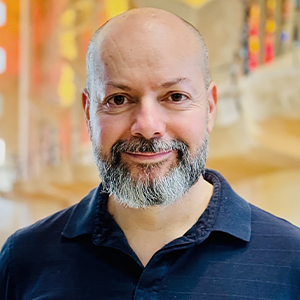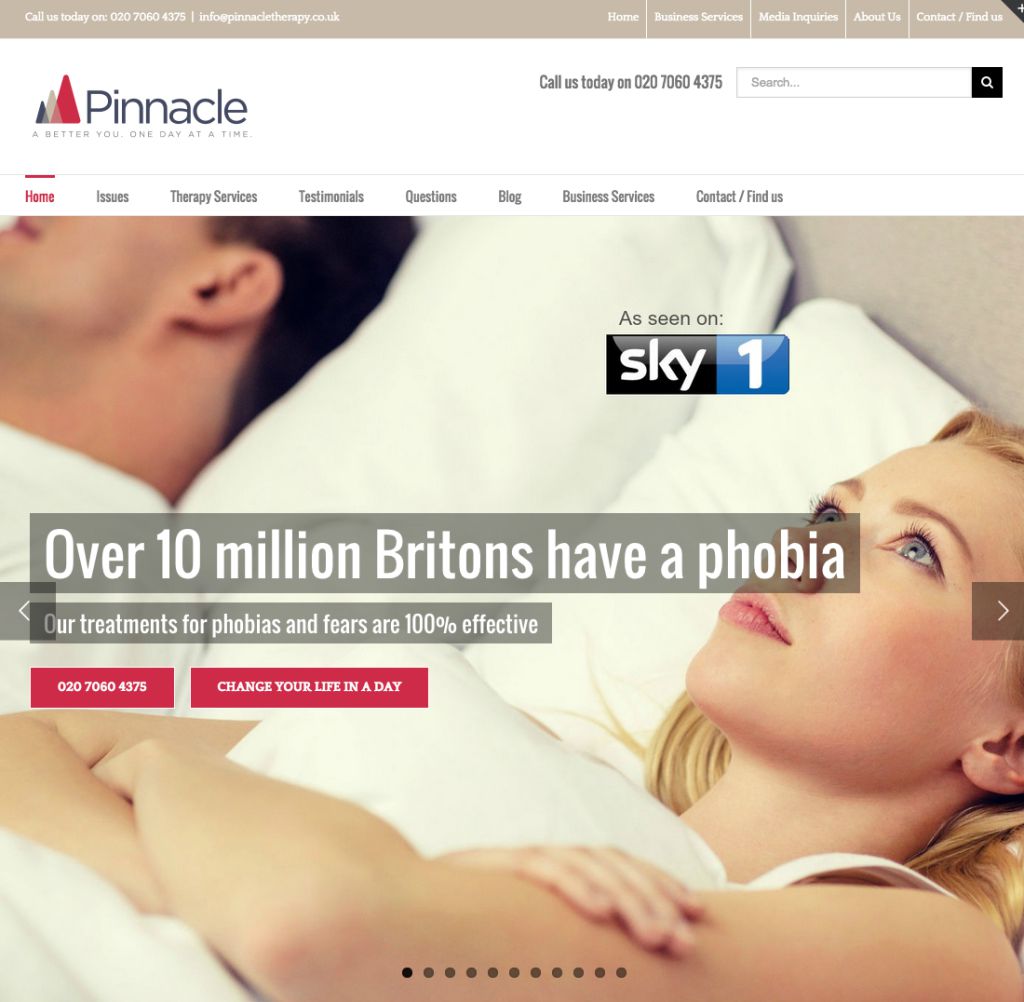Website conversion testing: a short introduction [case study] 2/2
In our last post, we covered the website conversion testing basics. In this post, we’ll illustrate the process using a case study of a global hair restoration chain of clinics, DHI.
Background
DHI is a global chain of 30 hair restoration clinics specialising in Direct Hair Implantation. The company is already successful, offering a unique treatment that avoids the problems associated with traditional hair transplantation. DHI wanted to increase leads from it’s UK website. We recommended making changes to their homepage to convert more visitors.
To identify methods of increasing the number of leads for DHI, LiveseySolar conducted an extensive review of their Google Analytics account to study their online market in the UK.
After identifying the strongest online competitors, we conducted reviews of their websites to understand the choices consumers were being asked to make.
Finally, we analyzed the homepage and contact us page to identify problems that might be leading to a conversion rate of 1.53%, which we considered to be underperforming.
Problem
Google Analytics showed that visitors to the UK homepage spent considerably less time on the page with a bounce rate that was significantly higher than the global site average.
Additional research confirmed that most UK visitors to the DHI site first visited the site at work, leading to shorter viewing times. It became apparent that in such a competitive market, we had just seconds to convert new visitors on a single page visit.
With a cursory glance of the original homepage, visitors were not being invited to easily make contact with DHI, and were bouncing off the page due to indecision and lack of certainty of how DHI was different from its competitors.
We hypothesised that British visitors to the site spend less time and are less patient than global visitors, requiring a homepage that instantly addresses their most important concerns as efficiently as possible.
Solution
Our task was to redesign a web page long enough to tell a story. Many people believe that it’s better to have shorter pages that don’t require scrolling, but we felt that what’s important is not how long your page is, but how engaging it is.
As we rewrote the page, we eliminated any links to content that would not support a conversion. Instead, we highlighted DHI’s celebrity patients and media exposure, testimonials, and a table that compared DHI against its competition.
Finally, we ensured we addressed the prospect’s emotional needs and provided them with a strong guarantee to reduce the risk of enquiring with DHI.
Results
To confirm our assumptions before implementing our solution, we ran a split A/B test using Google Website Optimizer.
After a 7-day A/B test comparing the original page versus the new page we discovered that the new page performed 126% better than the original homepage.
The original page converted 25 / 1638 visitors (1.53%) whilst the new page converted 56 / 1632 (3.45%) visitors in 7 days.
We estimate that the homepage receives 12,800 visitors a month. With the new conversion rate of 3.45%, the new homepage should convert 442 new leads, where the original page would convert 196 leads.
Typically, about 1 in 6 leads converts into a customer for DHI (15%).
The bottom line: £2.2 million
Therefore, in financial terms, this difference represents £2.2 million in incremental business per year as a result of this increased conversion rate. Importantly, this incremental business is a result of making better use of the existing traffic the website already has. It did not require any additional investments in marketing, search engine optimisation or paid search.
In our last post, we covered the website conversion testing basics. In this post, we’ll illustrate the process using a case study of a global hair restoration chain of clinics, DHI.
Background
DHI is a global chain of 30 hair restoration clinics specialising in Direct Hair Implantation. The company is already successful, offering a unique treatment that avoids the problems associated with traditional hair transplantation. DHI wanted to increase leads from it’s UK website. We recommended making changes to their homepage to convert more visitors.
To identify methods of increasing the number of leads for DHI, LiveseySolar conducted an extensive review of their Google Analytics account to study their online market in the UK.
After identifying the strongest online competitors, we conducted reviews of their websites to understand the choices consumers were being asked to make.
Finally, we analyzed the homepage and contact us page to identify problems that might be leading to a conversion rate of 1.53%, which we considered to be underperforming.
Problem
Google Analytics showed that visitors to the UK homepage spent considerably less time on the page with a bounce rate that was significantly higher than the global site average.
Additional research confirmed that most UK visitors to the DHI site first visited the site at work, leading to shorter viewing times. It became apparent that in such a competitive market, we had just seconds to convert new visitors on a single page visit.
With a cursory glance of the original homepage, visitors were not being invited to easily make contact with DHI, and were bouncing off the page due to indecision and lack of certainty of how DHI was different from its competitors.
We hypothesised that British visitors to the site spend less time and are less patient than global visitors, requiring a homepage that instantly addresses their most important concerns as efficiently as possible.
Solution
Our task was to redesign a web page long enough to tell a story. Many people believe that it’s better to have shorter pages that don’t require scrolling, but we felt that what’s important is not how long your page is, but how engaging it is.
As we rewrote the page, we eliminated any links to content that would not support a conversion. Instead, we highlighted DHI’s celebrity patients and media exposure, testimonials, and a table that compared DHI against its competition.
Finally, we ensured we addressed the prospect’s emotional needs and provided them with a strong guarantee to reduce the risk of enquiring with DHI.
Results
To confirm our assumptions before implementing our solution, we ran a split A/B test using Google Website Optimizer.
After a 7-day A/B test comparing the original page versus the new page we discovered that the new page performed 126% better than the original homepage.
The original page converted 25 / 1638 visitors (1.53%) whilst the new page converted 56 / 1632 (3.45%) visitors in 7 days.
We estimate that the homepage receives 12,800 visitors a month. With the new conversion rate of 3.45%, the new homepage should convert 442 new leads, where the original page would convert 196 leads.
Typically, about 1 in 6 leads converts into a customer for DHI (15%).
The bottom line: £2.2 million
Therefore, in financial terms, this difference represents £2.2 million in incremental business per year as a result of this increased conversion rate. Importantly, this incremental business is a result of making better use of the existing traffic the website already has. It did not require any additional investments in marketing, search engine optimisation or paid search.
Related Posts
Meet our Co-Founders
We’re passionate about helping leaders of high-quality, growth-minded practice owners double their practice revenue

Rod Solar
Founder & Scalable Business Advisor
For over 20 years, I’ve helped ophthalmology entrepreneurs scale their private practices. I specialise in doubling revenue within three years by offering a proven framework, hands-on experience, and a team of experts who implement what works. We take the guesswork out of growth and scale, so you can focus on delivering exceptional patient care while maximising the value of your business.
LiveseySolar completely transformed the way we were approaching this… We’ve gone from having just the dream of having a practice to having a practice up and running with people making inquiries and booking for procedures… It’s extremely pleasing. We feel lucky we connected with LiveseySolar.
— Dr Matthew Russell, MBChB, FRANZCO, specialist ophthalmic surgeon and founder of VSON and OKKO

Laura Livesey
Founder & CEO
I’m the co-founder & CEO of LiveseySolar. I’ve developed powerful eye surgery marketing systems that increase patient volumes and profits for doctors, clinics, and hospitals, since 1997.
Rod and Laura know as much about marketing surgery to patients as I know about performing it. They are an expert in the field of laser eye surgery marketing. They know this industry inside out. I believe that they could help many companies in a variety of areas including marketing materials, sales training and marketing support for doctors.
— Prof. Dan Reinstein, MD MA FRSC DABO, founder of the London Vision Clinic, UK








